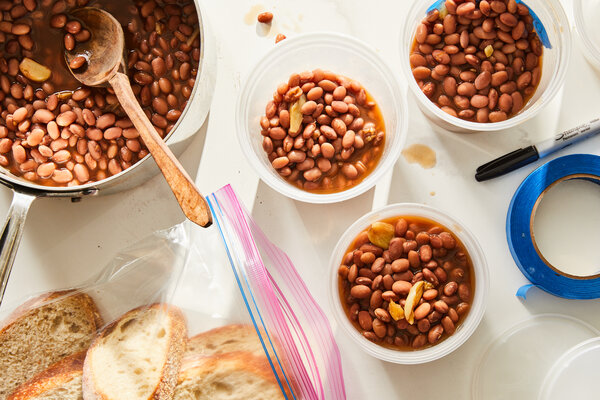When Caitlin Clark, the 22-year-old University of Iowa point guard, lines up against the University of Connecticut team on Friday night, she will most likely shoot the ball from far past the 3-point line. Then, against all odds and all coaching philosophies, she is likely to do so again, and again, and again. Whoever is unlucky enough to try to defend her is left to do little but shrug.
How does she do it, beyond having a once-in-a-generation type of talent? She trains aggressively, and for endurance. Her muscles must be able to withstand quick bursts of speed and agility and have the power needed to propel her skyward for her signature logo, or half-court, shots. They also need to be strong enough to sustain those quick motions for the entirety of a high-stress game without growing too fatigued to function. And she needs mental resilience to maintain that level of play without losing confidence or focus when things aren’t going smoothly.
Many of those skills are built in the gym with Lindsay Alexander, the associate strength and conditioning coach for Iowa’s women’s basketball team. Ms. Alexander is focused on a single question: “How do we make a more durable athlete?”
The answer is a combination of conditioning, aerobic work and plyometrics, a group of exercises that use rapid movements to build muscle power. Players do squats and deadlifts, and use a bench press to improve their upper-body and core strength. Ms. Alexander focuses particularly on strengthening players’ legs, which are especially important for shooting.
She also works with Ms. Clark and other players to enhance their cardiovascular health by doing drills known as intervals or tempo runs: Players run at hard paces and then take short breaks to recover. Over time, this kind of training makes it easier for their bodies to recover quickly from high-intensity activity.
“You’ve got to practice how you play,” Ms. Alexander said. “We practice up-tempo, fast-paced, hard basketball, so that’s how I view the weight room and the conditioning piece. I use that space to make them ready for practice, ready to be able to do it over and over again.”
Last summer, a clip of Ms. Clark training in the off-season went viral. Her regimen included 300 shots: one hundred three-pointers, one hundred free throws and one hundred from midrange. Ms. Alexander recalled watching the footage and texting Ms. Clark: “I don’t think you were running fast enough.”
In an interview with ESPN, Clark said she had entered college with a long and lean physique, like “a little twig.”
“The strength and conditioning program was a big help for me,” she said. Her body “started coming into its own” during her sophomore year, she added, and her leg strength has helped propel those 3-pointers from half-court.
In training, Ms. Alexander has focused on the explosive fast-twitch muscle fibers that players use over and over again to sprint and jump. When those muscles are used for extended periods of time, like during a competitive basketball game, lactic acid can begin to build up, tiring the muscles out. Strengthening the muscles through varying types of squats in the gym can help players sustain that speed for longer.
Improving recovery time is also essential, Ms. Alexander said. When a timeout is called or there is a break between quarters, players need to be able to get themselves back to their base-line heart rate — calming their respiratory and nervous systems and flushing the lactic acid out of their legs — before being able to quickly hit the court again and play at their highest level.
In training, Ms. Alexander also regularly measures how players are jumping and loading their weight on their feet using force plate testing, which involves a machine that tests leg strength and fatigue. She may adapt individual training programs based on that data — for example, having a player work with a coach on leg strengthening exercises if it’s clear they are tiring out too quickly from shooting.
The combination of those training elements is critical for a player like Ms. Clark, said Toby Edwards, an exercise scientist who works with the Australian cycling team and who co-authored a 2018 study on fatigue and basketball. The study found that by monitoring and tracking both workload and fatigue, coaches can better prescribe workloads that make the most of training and decrease fatigue, allowing athletes to perform at a higher level.
All of these efforts also help build the confidence and mental resilience of the players. They know their bodies are conditioned for the physicality of high-level play, because they have exceeded those levels of exhaustion in practice, Ms. Alexander said: “Our practices are way harder than our games.”







